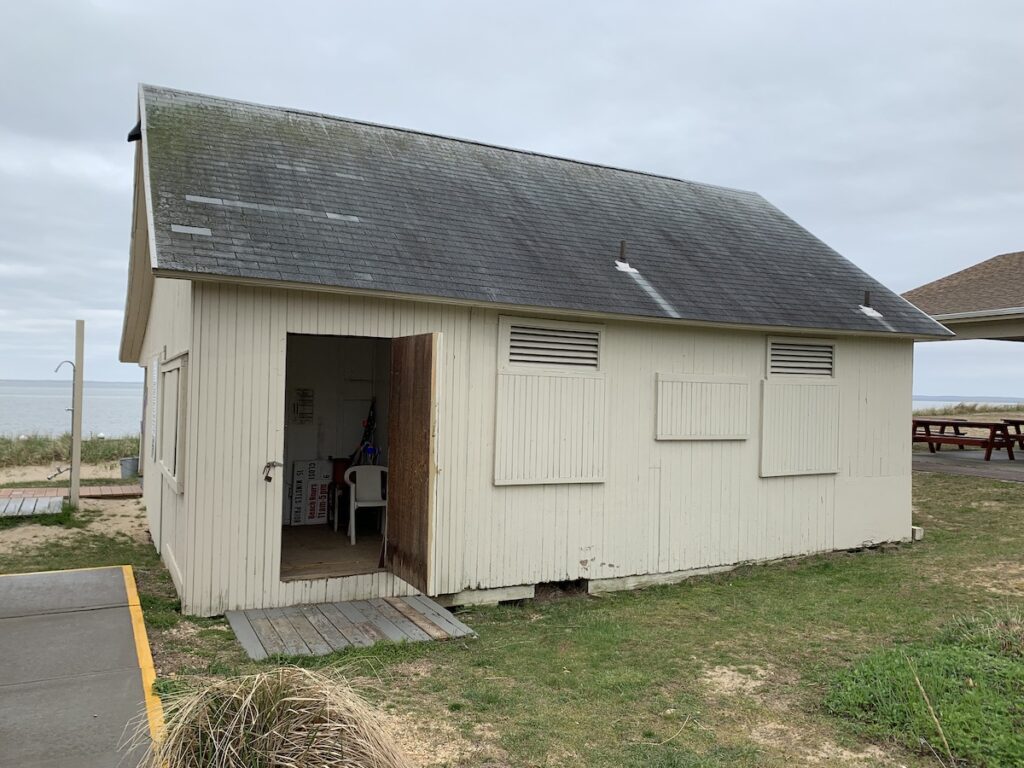Mattituck artist Anne Sherwood Pundyk opens solo exhibition at East End Arts

As the opening of a 2014 group gallery exhibition in the East Village approached, Mattituck resident Anne Sherwood Pundyk decided she needed a more colorful backdrop than a plain white wall to display her work.
“I went back to my studio in Tribeca at the time and looked down at the floor … I saw this great big piece of canvas and I thought ‘I’ll just paint on it,’” she explained. “I thought of it as wallpaper, and then when I brought it back into the studio here [in Mattituck after a move], I thought ‘there’s something great about how this looks and feels.’”
This improved backdrop inspired one of the latest — and perhaps quite literally, largest — chapters of Ms. Pundyk’s artistic career. On March 23, “Beauty of the Bounds,” her first East End solo exhibition since she and her husband, Jeff Pundyk, moved to Mattituck in 2014, will open at East End Arts. Among other works, Ms. Pundyk will display 10 of her raw canvas paintings. These canvases — the largest of which, reaches 12 feet by 15 feet — are too big for the Riverhead showing and have not been stretched and strung over wood frames. They flow free in the breeze like tapestries.
“It couldn’t be more gratifying,” Ms. Pundyk said of the exhibition, which will run through May 5 and feature a number of interactive talks and experiences, from a discussion on generational trauma to a Rites Of Spring performance.
Upon her relocation to Mattituck, the artist transformed the property’s detached three-car garage into an art studio illuminated by skylights. The space provides ample room for her large-scale creations, but she often paints outside in the backyard.
“At the end of my time in college, I felt I discovered what I wanted to say and how I wanted to see it,” Ms. Pundyk said. “I think the sanctuary of being here, the beauty, the light, has given me a way to reconnect with a place that is really important for my work … I’ve decided to do things my way, not accept other people’s ideas of how things should be and discover them for myself.”
In her studio, Ms. Pundyk keeps old brushes, ink tools, pastels and other artifacts handed down from her grandmother, Mary Sherwood Wright Jones. During her lifetime, her grandmother illustrated children’s books and magazines, including the national schoolchildren newsletter “My Weekly Reader.” Her grandmother’s work inspired her book “The Garden,” comprising pressed paintings that boast simple designs — zig-zagged lines and interlocking rings — but are paired with short stories that evoke heavy themes, ranging from motherhood to loss. Several illustrations and stories in “The Garden” will be on display during Ms. Pundyk’s East End Arts exhibit.
“My grandmother studied art in New York City and had a professional career focused on illustration, but she also did painting,” Ms. Pundyk said. “I saw what that took, the commitment. It’s a calling, you find yourself.”
Three of the walls in Ms. Pundyk’s studio feature one of her large, raw canvas paintings. She prefers working with loose raw canvas sheets because she can alter the size of any piece as it pours out of her. The Mattituck artist paints various pieces of this canvas and sews them together, leaving the colorful threading intact and highly visible. These stitches are joined by similarly colorful penciled lines, and the entire workspace gets layered with painted figures and textures. She paints perfect circles by tying her brush to a string secured to her canvas with a tack, adds grid marks by dipping square metal grates in paint and creates a splatter effect pressing not-quite-yet-dried paints she keeps rolled up in sheets of plastic onto the canvas.
These works are large enough to clearly express the changes in both color and tone that represent Ms. Pundyk changing emotions and vision as each piece progresses. With many of these works, she often starts in the dark — be it unpacking generational trauma or using deep shades of indigo — and finishes in the light — appreciating the relationships in her orbit and representing them as small, brightly colored circles within a larger outlined ring.
When discussing one such work “The Center Will Hold,” approximately 7 feet by 8 feet — the artist compared the scale and sophistication of her canvases to crafting a novel or a feature length film, and the final stages of her creative process to that of a composer scoring a symphony.
“It’s almost like a musical, it harmonizes,” she explained. “Things occur to me, as to what should come next … The location of the circle is important, and how big it is depends on what the painting is asking me to do. I’m looking at creating a sense of cohesion, the painting has to hold together. Putting grid mesh from my tool is a more traditional way of bringing balance and cohesion, [just like] bringing some of the red [which colors much of one side of the painting] into other spaces to have this feeling of resolve.”








